Dive into the extraordinary legacy of Alexander Von Humboldt, an intrepid explorer who defied boundaries to quench his insatiable thirst for knowledge.
Embarking on a perilous five-year journey, Humboldt unveiled the Earth’s secrets, laying the foundation for modern conservationism. Discover his timeless impact on science and the spirit of exploration.
Founded in 1870, Humboldt Lodge number 42 was named after Alexander Von Humboldt.
Alexander Von Humboldt was born on September 14, 1769 in Berlin, Prussia to a noble family with a curious mind. This gave Humboldt the passion for discovering new things, and how thing worked together and varied throughout the world. Eventually this led Humboldt on a 5 year trip to discover and contribute to science.
Masonry teaches us to love the arts and sciences, and Humboldt shows us this strong passion with his desire to not only acquire knowledge, but to share it and have a greater understanding of the world.
Humboldt had a passion for travel, science, learning, and sharing his experiences with the world. While there is no known connection between Humboldt and Freemasonry, and his father may have been a Mason, Alexander still left a huge impact on the world and shared Masonic virtues.
Alexander travelled the world, discovering and documenting everything along his way. From variations in plants and animals, to the natives, to various foods and historical events. If there was something to learn, Alexander wanted to learn it. It didn’t matter how dangerous, or what kind of challenges it might produce, or the cost.
Early Life
Alexander was born in Berlin, Prussia in 1769 (ED. 2018). He had a noble upbringing. Young Alexander preferred to be outside discovering than making friends with others.
Not only did Humboldt want to travel, he wanted to collect information that would benefit science and mankind, regardless of the nationality of the individual (A. W. ED, Selected Writings 2018).
This would later allow Humboldt to travel to many wonderful lands, but also put a target on his back.
South America
Alexander left Prussia on his travels and went through South America, Cuba, Mexico, and had a brief stay in the United States.
His visit to South America is where he spent most of his 5 year journey. During his time, he discovered several types of plants and their variations at different altitudes. He visited various regions under Spanish control and made several observations on nature.
He also visited several Catholic missionary outposts where he met with local clergy who would give him information on the area, historical facts, and introduce him and his party to the natives.
One of the first things he would do when he arrived at a new area was to go and meet the locals, bypassing the dignitaries. Alexander wanted information and to learn, he hated the politics and tried to visit dignitaries last, and only doing so to continue having permission to explore.
Humboldt explored all over the Spanish controlled areas of South America. While he wanted to explore more, he not only did not receive permission form Portugal, but had an arrest warrant issued if he ventured into their territory. He spent most of the 5 years of his travels in this part of the world.
Humboldt made many discoveries on his travels. He and his team took meticulous details of everything. The team detailed every single observation they could come across. They studied the grass, the plants, the natives, the historical meteorological conditions and events.
The team studied everything. They took several scientific instruments including two barometers, one of which broke. When their precious barometer broke, they limited access and took special care with the other one since it could not be easily replaced if it also were to break or fail.
Humboldt’s observations were so detailed, he would include the name of what he observed, any scientific name, detailed description of the plant or animal, and any information on what the locals would call it. An observation of one of the monkeys for example, shows the incredible detail Humboldt showed. Humboldt observed a particular monkey called the macavahu.
These monkeys had black hair with some white fur on the face resembling a mask. The missionaries called them viuditas, otherwise known as “widows in mourning”. This is because it looked like they had a veil, gloves, and neck scarf which made them look like they were wearing clothes that a widow in mourning would have on. (A. W. ED, Selected Writings 2018)
On one of their observations, Humboldt learned of electric eels and wanted to study them. The eels were too deadly to just simply grab so the natives scared some horses into the water, the eels would electrocute the horses and the horses grew weak and would drown in the water.
The eels would also grow weak and Humboldt’s team could study them. (A. W. ED, Selected Writings 2018)
One of the mountain excursions, Humboldt wanted to observe and record the height of Chimborazo, the path was so narrow that they had to crawl on their hands and knees in order to avoid falling off on either side.
They got to a part that they believed was the peak, only to discover that there was a higher peak and the path to reach it was nonexistent. (R. A. ED 2023)
Cuba
Humboldt had sent several of his manuscripts, specimens, and illustrations ahead to Cuba. When he arrived he also made a stunning observation: slavery.
Humboldt was so appalled by this that he penned a letter not only describing the atrocities of slavery, but why it should be abolished. (A. W. ED, Selected Writings 2018)
USA
Humboldt came to the new country at the request of President Thomas Jefferson. The USA had just made the Louisiana purchase, Lewis and Clark had just set out on their expedition and Jefferson believed the Humboldt’s expertise could be useful.
Humboldt gave copies of everything he had that might be useful to the USA, and while he and Jefferson differed how to end slavery, the two had respect for one another when Humboldt returned home.
Influence
Needless to say Humboldt’s journey left a tremendous impact on the world of science, botany, and nature. Humboldt was one of the first conservationists of nature, and he helped lead the USA into using the money from chemist James Smithson into the founding of the Smithsonian Institution.
Humboldt’s legacy led several counties and Masonic Lodges to adopt his name, the first being in California, another being lodge 42 in Indiana. Humboldt Lodge 42 was one of six German speaking lodges in the state, and with Alexander Humboldt being of the German speaking country of Prussia, this may have influenced them to name their lodge after the great explorer and scientist.
The number 42 most likely came from the last part of Humboldt’s trip to the Americas. When Humboldt was leaving for home, he wanted to share his findings with all of science, and wanted to better protect his collections, so he split his collection into three groups.
Some of his findings went to the USA and England, some to France and Spain, and “forty-two boxes containing a herbal of 6,000 equinoctial plants, seeds, shells, and insects, and geological specimens from Chimborazo, New Granada and the banks of the Amazon” (A. W. ED, Selected Writings 2018)
Humboldt was also one of the first to notice that plants and animals have variations at different altitudes. He states, “But if the wealth of life is spread everywhere, organic life is also unceasingly occupied with connecting to new forms those elements liberated by death: this richness of life and its renewal differ, however, depending on differences in latitude.” (A. W. ED, Selected Writings 2018)
Footnaotes
References
ED, Andrea Wulf. 2018. Selected Writings. Edited by Andrea Wulf. Translated by Jason Wilson. New York: Everyman’s Library.
—. 2018. Selected Writings. New York: Everyman’s Library.
—. 2018. Selected Writings. New York: Everyman’s Library.
—. 2018. Selected Writings. New York: Everyman’s Library.
—. 2018. Selected Writings. New York: Everyman’s Library.
—. 2018. Selected Writings. New York: Everyman’s LIbrary.
ED, Ross Arbour. 2023. “Explorers Podcast.” Alexander Von Humboldt – Part 3- The Andes Mountains. Airwave Media, 12 05. https://explorerspodcast.com/alexander-von-humboldt/.
ED., Andrea Wulf. 2018. Selected Writings. New York: Everyman’s Library.
Article by: Tanner M. Shipman
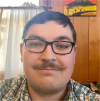
Tanner M. Shipman is an officer at Social Lodge #86 in Indiana.
He has a passion for the craft, its history, and researching Masonic topics.
Recent Articles: in people series
 Celebrate the extraordinary legacy of The Marquis de La Fayette with C.F. William Maurer's insightful exploration of Lafayette's 1824-25 tour of America. Discover how this revered leader and Freemason was honored by a young nation eager to showcase its growth and pay tribute to a hero of the American Revolution. |
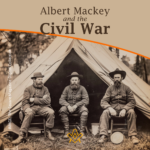 Albert Mackey and the Civil War In the midst of the Civil War's darkness, Dr. Albert G. Mackey, a devoted Freemason, shone a light of brotherhood and peace. Despite the nation's divide, Mackey tirelessly advocated for unity and compassion, embodying Freemasonry's highest ideals—fraternal love and mutual aid. His actions remind us that even in dire times, humanity's best qualities can prevail. |
 Discover the enduring bond of brotherhood at Lodge Dumfries Kilwinning No. 53, Scotland's oldest Masonic lodge with rich historical roots and cultural ties to poet Robert Burns. Experience rituals steeped in tradition, fostering unity and shared values, proving Freemasonry's timeless relevance in bridging cultural and global divides. Embrace the spirit of universal fraternity. |
 Discover the profound connections between John Ruskin's architectural philosophies and Freemasonry's symbolic principles. Delve into a world where craftsmanship, morality, and beauty intertwine, revealing timeless values that transcend individual ideas. Explore how these parallels enrich our understanding of cultural history, urging us to appreciate the deep impacts of architectural symbolism on society’s moral fabric. |
 Discover the incredible tale of the Taxil Hoax: a stunning testament to human gullibility. Unmasked by its mastermind, Leo Taxil, this elaborate scheme shook the world by fusing Freemasonry with diabolical plots, all crafted from lies. Dive into a story of deception that highlights our capacity for belief and the astonishing extents of our credulity. A reminder – question everything. |
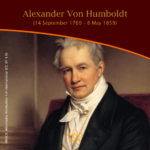 Dive into the extraordinary legacy of Alexander Von Humboldt, an intrepid explorer who defied boundaries to quench his insatiable thirst for knowledge. Embarking on a perilous five-year journey, Humboldt unveiled the Earth’s secrets, laying the foundation for modern conservationism. Discover his timeless impact on science and the spirit of exploration. |
 Voltaire - Freethinker and Freemason Discover the intriguing connection between the Enlightenment genius, Voltaire, and his association with Freemasonry in his final days. Unveil how his initiation into this secretive organization aligned with his lifelong pursuit of knowledge, civil liberties, and societal progress. Explore a captivating facet of Voltaire's remarkable legacy. |
 Robert Burns; But not as we know him A controversial subject but one that needs addressing. Robert Burns has not only been tarred with the presentism brush of being associated with slavery, but more scaldingly accused of being a rapist - a 'Weinstein sex pest' of his age. |
 Richard Parsons, 1st Earl of Rosse Discover the captivating story of Richard Parsons, 1st Earl of Rosse, the First Grand Master of Grand Lodge of Ireland, as we explore his rise to nobility, scandalous affiliations, and lasting legacy in 18th-century Irish history. Uncover the hidden secrets of this influential figure and delve into his intriguing associations and personal life. |
 James Gibbs St. Mary-Le-Strand Church Ricky Pound examines the mysterious carvings etched into the wall at St Mary-Le-Strand Church in the heart of London - are they just stonemasons' marks or a Freemason’s legacy? |
 Freemasonry and the Royal Family In the annals of British history, Freemasonry occupies a distinctive place. This centuries-old society, cloaked in symbolism and known for its masonic rituals, has intertwined with the British Royal Family in fascinating ways. The relationship between Freemasonry and the Royal Family is as complex as it is enduring, a melding of tradition, power, and mystery that continues to captivate the public imagination. |
 A Man Of High Ideals: Kenneth Wilson MA A biography of Kenneth Wilson, his life at Wellington College, and freemasonry in New Zealand by W. Bro Geoff Davies PGD and Rhys Davies |
 In 1786, intending to emigrate to Jamaica, Robert Burns wrote one of his finest poetical pieces – a poignant Farewell to Freemasonry that he wrote for his Brethren of St. James's Lodge, Tarbolton. |
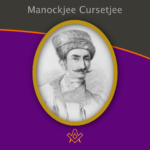 Alex Lishanin explores Mumbai and discovers the story of Lodge Rising Star of Western India and Manockjee Cursetjee – the first Indian to enter the Masonic Brotherhood of India. |
 Aleister Crowley - a very irregular Freemason Aleister Crowley, although made a Freemason in France, held a desire to be recognised as a 'regular' Freemason within the jurisdiction of UGLE – a goal that was never achieved. |
 Sir Joseph Banks – The botanical Freemason Banks was also the first Freemason to set foot in Australia, who was at the time, on a combined Royal Navy & Royal Society scientific expedition to the South Pacific Ocean on HMS Endeavour led by Captain James Cook. |
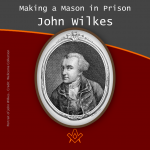 Making a Mason in Prison: the John Wilkes’ exception? |
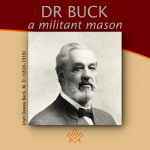 "To be a good man and true" is the first great lesson a man should learn, and over 40 years of being just that in example, Dr Buck won the right to lay down the precept. |
 Elias Ashmole: Masonic Hero or Scheming Chancer? The debate is on! Two eminent Masonic scholars go head to head: Yasha Beresiner proposes that Elias Ashmole was 'a Masonic hero', whereas Robert Lomas posits that Ashmole was a 'scheming chancer'. |
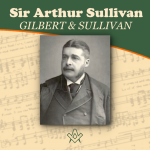 Sir Arthur Sullivan - A Masonic Composer We are all familiar with the comic operas of Gilbert and Sullivan, but did you know Sullivan was a Freemason, lets find out more…. |
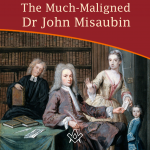 The Much-Maligned Dr John Misaubin The reputation of the Huguenot Freemason, has been buffeted by waves of criticism for the best part of three hundred years. |
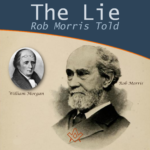 Was William Morgan really murdered by Masons in 1826? And what was the lie Masonic author Rob Morris told? Find out more in the intriguing story of 'The Morgan Affair'. |
 Lived Respected - Died Regretted Lived Respected - Died Regretted: a tribute to HRH The Prince Philip, Duke of Edinburgh |
 Who was Moses Jacob Ezekiel, a Freemason, American Civil War Soldier, renowned sculptor ? |
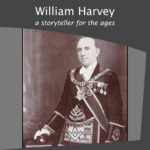 A Masonic author and Provincial Grand Master of Forfarshire in Scotland |
 Who was Philip, Duke of Wharton and was he Freemasonry’s Loose Cannon Ball ? |
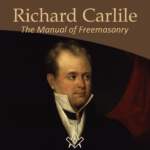 Richard Carlile - The Manual of Freemasonry Will the real author behind The Manual of Freemasonry please stand up! |
 Nicholas Hawksmoor – the ‘Devil’s Architect’ Nicholas Hawksmoor was one of the 18th century’s most prolific architects |
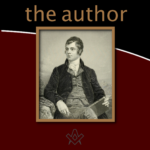 By Bro. Anthony Oneal Haye (1838-1877), Past Poet Laureate, Lodge Canongate Kilwinning No. 2, Edinburgh. |
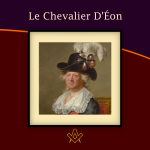 The Curious Case of the Chevalier d’Éon A cross-dressing author, diplomat, soldier and spy, the Le Chevalier D'Éon, a man who passed as a woman, became a legend in his own lifetime. |
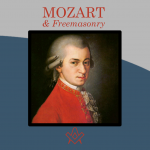 Mozart Freemasonry and The Magic Flute. Rev'd Dr Peter Mullen provides a historical view on the interesting topics |
masonic knowledge
to be a better citizen of the world
share the square with two brothers

click image to open email app on mobile device





